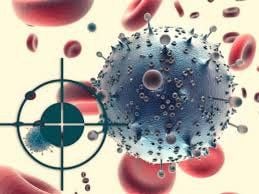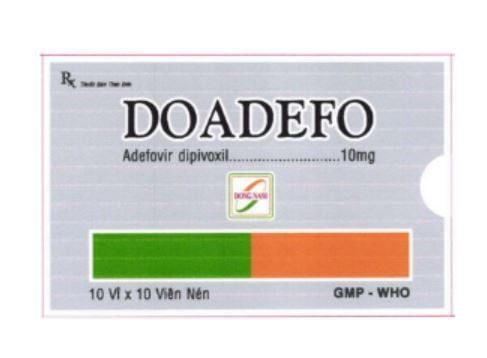This is an automatically translated article.
Vinmec International General Hospital is now widely applying embolization for liver cancer (TACE) to patients. This is the optimal treatment method with high efficiency, contributing to improving the quality of life and prolonging the patient's life.1. What is liver cancer?
Primary liver cancer is a malignancy of the liver that occurs when the normal cells of the liver become morphologically and functionally abnormal. These cells proliferate at a rapid rate, not under the control of the body, forming malignant tumors that have the ability to strongly invade surrounding tissues and metastasize to organs outside the liver. There are three main types of primary liver cancer: hepatocellular carcinoma (which develops from liver cells), cholangiocarcinoma (which develops from the bile ducts located in the liver) and hepatoblastoma. Among them, hepatocellular carcinoma is the most common type.2. Current treatment methods for liver cancer
The choice of treatment for liver cancer depends on how far the malignant cells have spread. Commonly applied methods are:2.1 Surgery to help remove the part of the liver containing the malignancy, selected in the case of small or medium-sized liver tumors, capable of resection. This is the most important radical treatment in the treatment of liver cancer;
2.2 Liver Transplant Replace a diseased liver with a healthy liver from a healthy donor or brain dead person. However, this method carries many risks of complications related to transplant rejection, infection caused by immunosuppressive drugs after liver transplantation;
2.3 Tumor destruction in situ A modern method to destroy cancerous tissue without surgery. The general mechanism is the use of heat or substances that cause cancer cell death such as: Tumor burning with high frequency waves, microwaves, absolute alcohol injection through the skin, cryotherapy. This method is usually indicated for liver cancer patients with small tumors (less than 3cm) and performed under the guidance of imaging tools, especially ultrasound;
2.4 Liver Cancer Embolization (TACE) A measure that blocks the blood supply to malignancies in the liver. The doctor will insert the instrument into the branch of the hepatic artery that supplies blood to the tumor, then inject embolization material with chemicals that cause embolism. After that, the tumor will be deprived of blood supply and gradually necrosis. This method is indicated for the treatment of large, multifocal liver tumors that are no longer capable of surgery or used as a stepping stone before surgical removal of liver tumors;
2.5 Radiation Therapy Irradiate on a malignant tumor to kill cancer cells, shrink the size of the tumor;
2.6 Chemotherapy Using chemotherapy to kill cancer cells orally, intravenously or selectively pump into the hepatic artery to supply blood to the tumor when embolizing;
2.7 Targeted Treatment Often indicated when the above methods do not work.

Điều trị nhắm trúng đích thường được chỉ định khi các phương pháp trên không phát huy hiệu quả
3. Overview of embolization methods for liver cancer treatment
For cases of primary liver cancer that are not suitable for surgery (multifocal liver tumors, large liver tumors, liver function or systemic conditions that do not allow surgery), the following options can be applied. other treatment options, typically the hepatic vascular intervention method. Angioplasty is a minimally invasive method that does not completely treat but can improve symptoms and prolong the patient's additional time.3.1 Vascular interventions to treat liver cancer 3.1.1 Embolization (embolism) is a method of occlusion of blood vessels feeding a liver tumor alone. The physiological basis of this method is that the liver tumor is fed mainly with blood from the arteries (different from the healthy liver parenchyma which is fed mainly with venous blood).
The embolization method cuts off the source of the liver tumor, causing the tumor to grow slowly and possibly necrosis. However, after a while, the blood flow will return or the liver tumor mobilizes another source of blood supply, so this method is not thorough and must be repeated many times.
3.1.2 Injecting chemotherapy through the hepatic artery Also known as intra-arterial chemotherapy. Your doctor will either inject anti-cancer chemotherapy into the liver tumor or place a chemotherapy port into the liver tumor. This method is indicated for cases of liver cancer that can spread or have many tumors, which cannot cause embolism.
3.1.3 Chemical embolism Chemical embolism is also known as petrochemical embolism. This is the most common method of transarterial intervention today in the treatment of primary liver cancer. The embolization method combines both pumping chemicals into the liver tumor and causing embolism, so the liver tumor will be destroyed by two mechanisms: the direct effect of chemicals and the lack of blood supply;
3.1.4 Microsphere embolization is an improved embolization method, using microspheres (plastic particles with a diameter of hundreds of micrometers) that both bring chemicals into the liver tumor and cause blood vessel occlusion. nourish the tumor. This method increases the ability to kill tumors compared with conventional embolization;
3.1.5 Embolization radiotherapy Also known as selective radiation irradiation. This technique involves pumping microspheres with radiopharmaceuticals attached to the liver tumor to destroy cancer cells (similar to the form of irradiation from within the tumor).
3.2 Details of the method of embolization for liver cancer (TACE) at Vinmec

Nút mạch nhằm ngăn chặn máu đưa tới nuôi dưỡng khối u ác tính trong gan
This is a modern, minimally invasive treatment method with many outstanding advantages such as:
Short implementation time: Only 45 minutes for embolization; The incision of the interventional device is very small, only equivalent to the tip of a needle; During the procedure, the patient is fully awake; High safety, less complications and less side effects compared with conventional major liver surgery; Short hospital stay (applicable to outpatients); Extend survival time and improve patient quality of life. 3.3 Combination of embolization (TACE) and radiofrequency ablation (RFA) for liver cancer treatment at Vinmec Hepatocellular carcinoma is a cancer that is difficult to control completely with only one treatment method. Therefore, doctors often use a combination of different therapeutic methods to achieve the desired treatment effect. With malignant liver tumors over 5cm in size, doctors often assign patients to perform a combination of 2 treatments, namely liver tumor embolization and radiofrequency ablation (TACE and RFA) to effectively control the tumor. results and reduce unpleasant symptoms. The biggest advantage of this method is minimal intervention but high treatment efficiency and safety.
Specifically, after plugging the artery that supplies blood to the tumor, when the tumor size has shrunk, doctors will continue to perform the technique of treating malignant liver tumors by radiofrequency ablation under the guidance of doctors. of ultrasound. Radiofrequency ablation is a technique that uses high-energy radio waves to generate heat to destroy cancer cells. When combined with ultrasound, the technique allows the treating doctor to see the exact path of the needle, placing it right into the tumor to destroy the tumor most thoroughly.
At Vinmec International General Hospital, imaging plays a very important role when implementing methods of treating liver cancer with embolization and radiofrequency ablation. Under the guidance of ultrasound machine, MRI machine, CT computerized tomography machine, modern DSA angiography room, malignant tumors in the liver will be identified and approached in many different directions. From here, doctors can remove as much of the blood vessels that feed the melanoma. At the same time, preserving the blood vessels that nourish the healthy liver parenchyma. As a result, liver function is not severely damaged after the intervention, bringing outstanding treatment efficiency to the patient.

Tại Bệnh viện Đa khoa Quốc tế Vinmec, chẩn đoán hình ảnh nắm giữ vai trò vô cùng quan trọng khi triển khai các phương pháp điều trị ung thư gan bằng nút mạch và đốt sóng cao tần
Diagnosis of the disease by blood tests, ultrasound, CT scan, MRI scan, core biopsy tumor if necessary; Multi-specialty oncology consultation includes: Hepatobiliary Medicine, Surgery, Oncology, Diagnostic Imaging, Pathology, Nutrition,... to provide the most suitable treatment regimen for the patient; If embolization and radiofrequency ablation (TACE and RFA) are indicated, the patient will be performed under the guidance of a DSA angiogram and ultrasound; Patients take medication as prescribed, take care at the hospital within 1-2 days and then leave the hospital; Follow up with the doctor's appointment to assess the effectiveness of treatment, monitor the tumor and treat underlying diseases such as viral hepatitis, cirrhosis. With a team of highly qualified medical professionals and modern machinery, the application of the TACE method at Vinmec International General Hospital has contributed to improving the quality of life. life and improve patient survival.
For detailed information and to book an appointment for examination and consultation, customers can call hotlines of hospitals or register for an online consultation with Vinmec International General Hospital HERE.
MORE:
What are the characteristics of primary liver cancer? Why is liver cancer more common in men than in women? Japan transfers technology for liver cancer treatment "Super Selective System - I" to Vinmec













